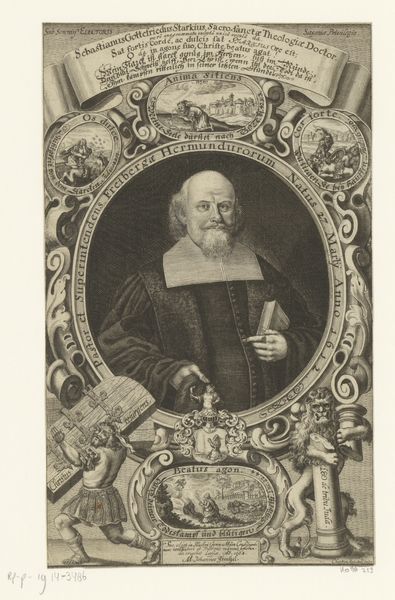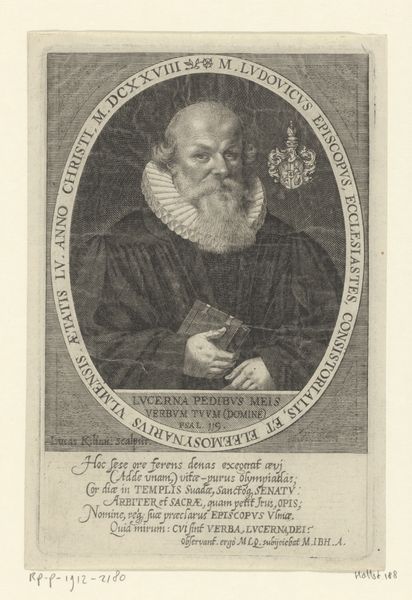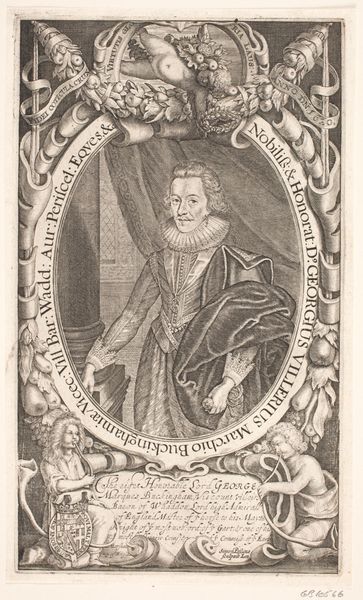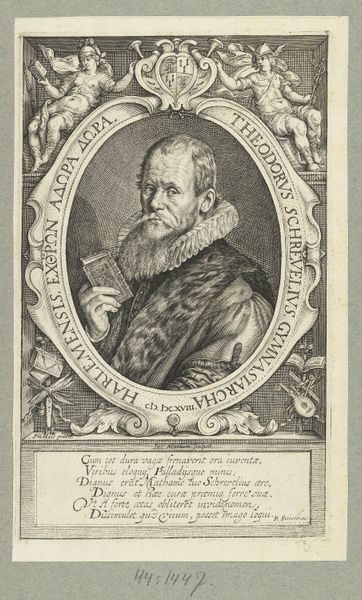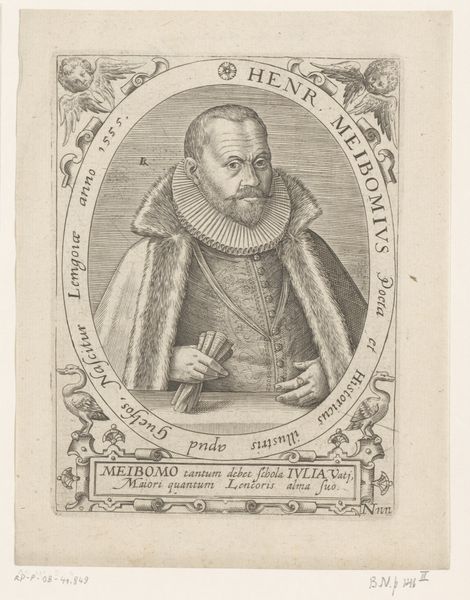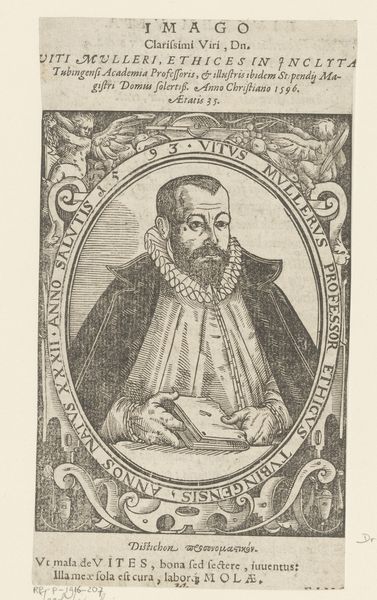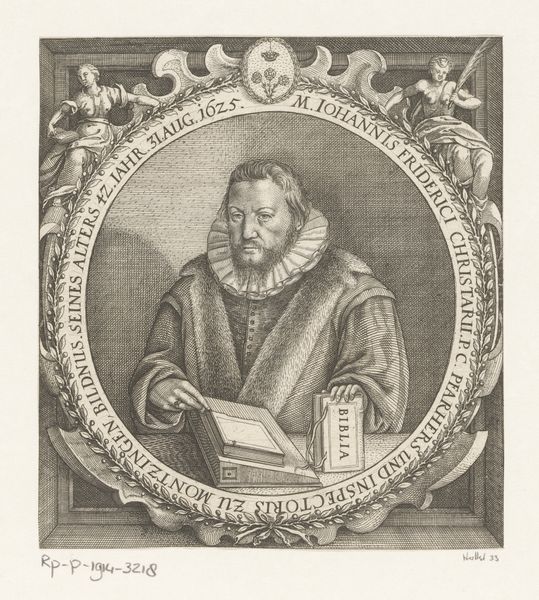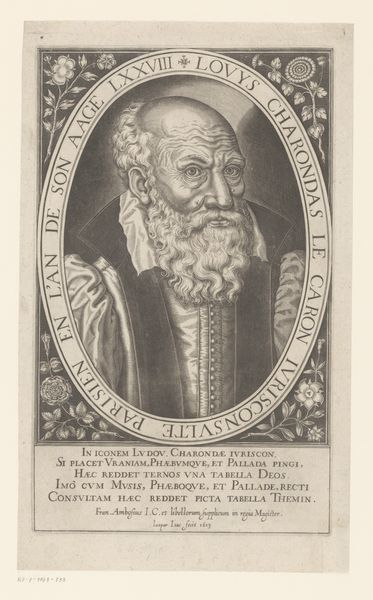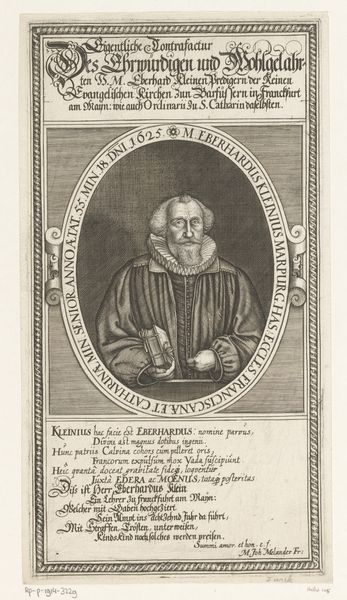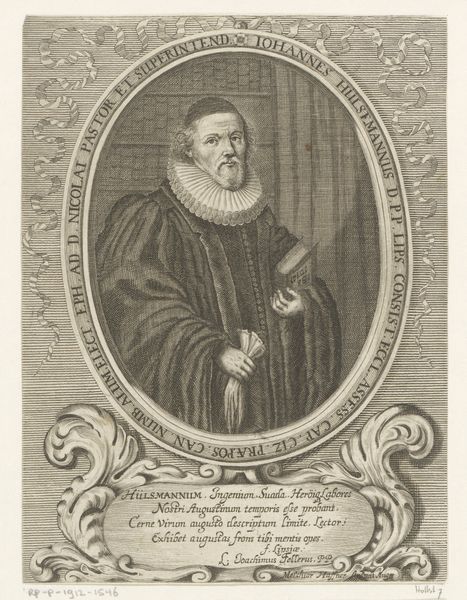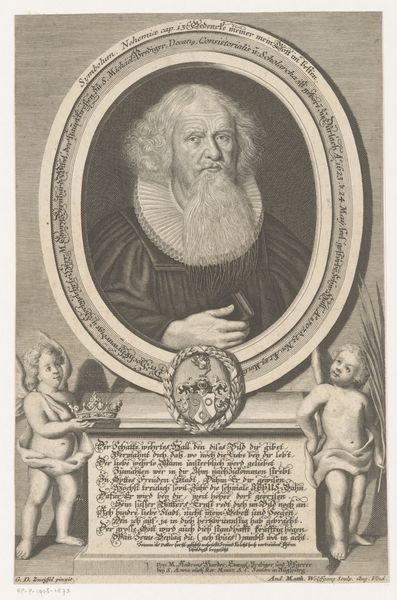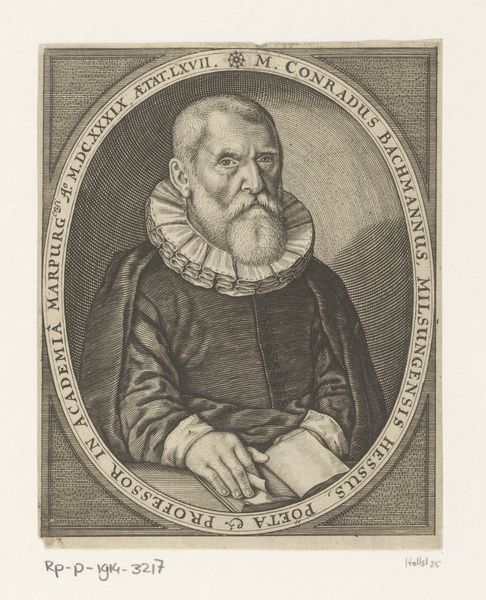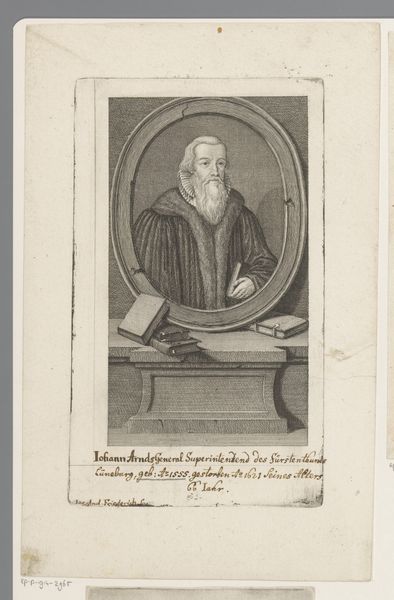
engraving
#
portrait
#
baroque
#
old engraving style
#
limited contrast and shading
#
portrait drawing
#
history-painting
#
engraving
Dimensions: height 183 mm, width 121 mm
Copyright: Rijks Museum: Open Domain
Curator: This is a 1644 engraving titled "Portret van Johannes Höpner" by Peter (I) Rollos. At first glance, I'm struck by the starkness and level of detail that the artist was able to create using such simple means. Editor: Yes, it has a serious tone. Look at the man's determined face and scholarly dress. The ornate border, featuring religious figures and heraldic symbols, really place it in its historical context. It feels like a formal representation of power and intellect in a highly structured society. Curator: I am most fascinated by how Rollos, working with only engraved lines, gives us an almost tangible sense of Höpner's clothing – the heavy robe and the meticulously detailed ruff around his neck. It’s incredible how the variations in line weight can convey texture and weight with such skill. Editor: Agreed. These images always remind us of how literacy, knowledge, and religious authority intertwined during this period. Notice how he’s holding a book – a crucial symbol. This image also implicitly addresses issues of class. Printmaking allowed wider access to powerful figures, albeit through mediated images. It prompts considerations around accessibility and social stratification during that time. Curator: Right, but also, consider the production of this image. What kind of labor went into this printmaking, what was the artist being paid? Engravings were not considered "high art", so questions arise about how and where they were made, what kind of apprenticeship might someone have had? What kind of person owned it? Editor: All fascinating questions. When viewing it through a lens of social history, it raises critical dialogues around status, labor, and religion at that specific moment. It invites us to go deeper, asking us to critically engage with history beyond the mere representation of this individual. Curator: Absolutely. And looking closely, one can imagine Rollos’s deliberate hand, the time, patience, and skill required to physically produce each line that shaped this detailed portrayal of a powerful figure and their world. Editor: It also encourages critical examination of that power, asking viewers to contextualize the image within broader historical narratives of colonialism, religion, and the socio-political landscape of the time. Curator: Indeed, it provides so much insight from just examining how its medium was constructed. Editor: Precisely, together they paint a more complete, and critical, portrait of the man and the moment.
Comments
No comments
Be the first to comment and join the conversation on the ultimate creative platform.
